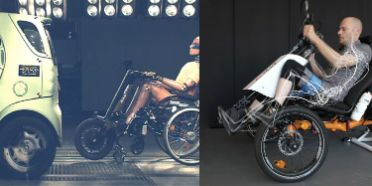- Research Project
Comparative testing of electric drives for wheelchairs
SCI-Mobility offers a comparative test for various electric wheelchair drive systems. These results are made available to the public to enhance market transparency.
Factsheet
- Lead school(s) School of Engineering and Computer Science
- Institute Institute for Energy and Mobility Research IEM
- Duration 01.01.2022 - 01.09.2023
- Project management Prof. Sebastian Tobler
- Head of project Vincent Morier-Genoud
- Keywords Wheelchair, scooter, electric assist, consumer testing, disability
Background
The lack of information and studies on vehicles for people with reduced mobility makes choosing a product suitable for their day-to-day needs extremely complex. Some solutions are unable to assist the user without becoming unstable and potentially dangerous. In addition, there is a lack of clarity in the legislation which means there is sometimes incompatibility between wheelchairs and drive systems or between the law on road traffic and equipment imported into Switzerland. There is urgent need for the provision of comprehensive comparative testing of the various products available on the market so that users can be provided with guidance on purchasing the solution that best meets their needs.
Objective
This project aims to put various electric drive systems through a series of tests to evaluate them and to then publish the results. The technical data on the vehicles obtained by researchers will be combined with the information collected by users about their disability situation in order to highlight the performance, the qualities and the deficiencies of the vehicles.
Results
The project resulted in an article describing the technical results obtained by each of the vehicles during dynamic track tests, and in an evaluation carried out by users who were able to test each of the products at home over a 2-week period. Beyond the comparisons that can be made between the various products, the results of the tests confirm that using this type of system at speeds in excess of 10 km/h does not ensure safe dynamic behavior.
Looking ahead
SCI-Mobility hopes to draw manufacturers’ attention to situations where users are at risk, so as to place emphasis on security when developing such products. It would also be important to reduce the legal grey areas concerning such mobility assistance systems by moving in the direction of safety and equal treatment between disabled and non-disabled people.
Future tests may be envisaged for similar products.


